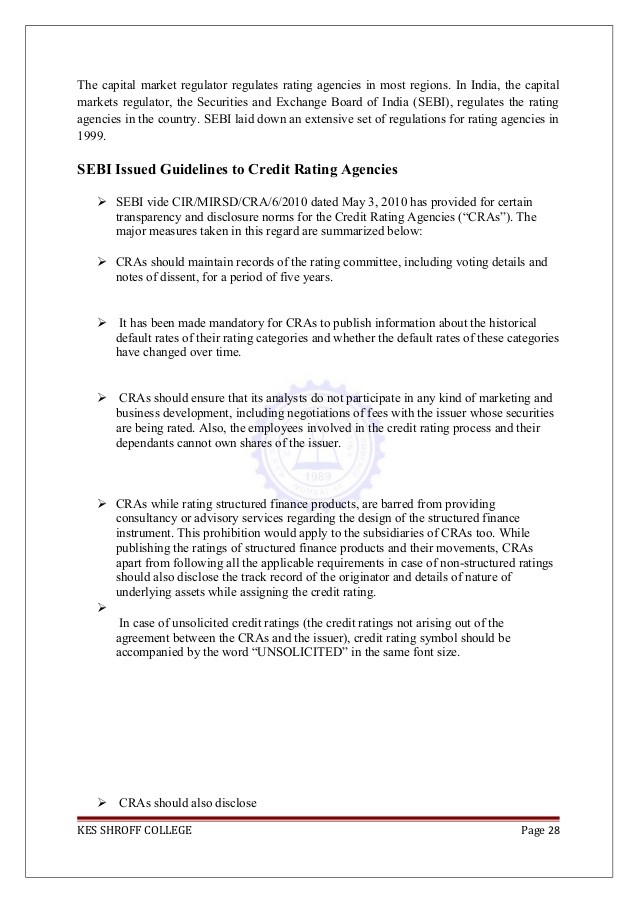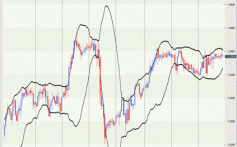The systemic regulation of credit ratings agencies and rated markets
Post on: 16 Март, 2015 No Comment

Search form
The systemic regulation of credit ratings agencies and rated markets
Amadou Sy 25 July 2009
Credit rating agencies can increase systemic risk through unanticipated and abrupt downgrades. Such ratings crises can lead to large market losses, fire sales, and liquidity shortages and have knock-on effects on a number of systemically important market participants through legislation, regulations, supervisory policies, contractual arrangements, or investment practice.
For instance, in the current crisis, defaults of subprime loans have led to abrupt and unanticipated rating downgrades of a number of rated securities, issuers, and bond insurers.
These downgrades, in turn, led to larger market losses for investors, including banks’ off-balance sheet entities such as conduits and special investment vehicles. They also led to larger funding needs from banks sponsoring these off-balance sheet entities and larger collateral calls from insurers in the CDS markets such as AIG. Some of these channels, such as rating-triggers were also present in the case of the market disruptions following the fall of Enron and WorldCom. An additional problem with rating downgrades is that they may be pro-cyclical, as first round effects can lead to further downgrades.
Although conflicts of interests and informational issues are key to understanding why such rating crises occur (see Freixas and Shapiro 2009), it is critical to identify the different facets of risks in the “rated market,” how they can lead to systemic crises, and how to measure and manage them. Yet, a key finding of a recent stocktaking exercise by the Joint Forum (2009) find that policymakers do not conduct formal assessments of the impact of the use of credit ratings on financial markets.
Policymakers should better assess the nature and extent of the use of credit ratings in financial markets as well as their potential impact on financial stability. Such an approach should require both micro- and macro-level analysis, include all market participants, and take a global approach.
The determinants of the supply and demand for “rated assets”, especially in “good times” and the implications of unanticipated abrupt downgrades in “bad times”, should be assessed carefully. For instance, the proposed US Financial Services Oversight Council of prudential regulators should include credit rating agencies in its mandate.
Such an approach requires an assessment of the systemic effects of rating downgrades. Key components include:
- The type of institutions and markets that would be affected by downgrades, whether directly or indirectly, and how systemic and interconnected they are.
- The consequences for financial markets and the economy in terms of market losses, liquidity shortages, loss of access to credit, and reduced liquidity.
- The factors that can increase downgrade risk, idiosyncratic and systemic.
- The measurement of systemic downgrade risk.
- The management of downgrade risk at the systemic level through increased capital requirements or liquidity buffers, or other means.
A three-step approach to address the systemic risk of credit ratings
In a recent paper, I propose a three-step approach to address the system risk of credit ratings (Sy 2009). As a first step, policymakers should have a good grasp of the risk inherent to credit ratings. In particular, policymakers should use “rating maps” to identify the different channels through which rating downgrades can lead to systemic risk.
Given the potential procyclicality of ratings, questions will also need to be asked in “good times,” during boom cycles. Credit ratings can encourage the growth of the rated market where rated securities are transacted. This growth may also be accompanied by a higher volume of highly rated securities. This “rating inflation” was a key development prior to the current crisis, and policymakers will need to get a full grasp of the determinants of “rating inflation” (see Skreta and Veldkamp 2009). Questions will need to be asked about market participants’ incentives and the methodology used to justify substantially larger volumes of highly rated securities.
Second, policymakers will need to measure risks inherent to ratings once they are identified. A useful method to measure the systemic exposure to downgrade risk during boom cycles would be for regulators and institutions to stress test their balance sheet and off-balance sheet positions. Risk managers have long been aware of the risks of credit downgrades, especially for fixed income portfolios. The current crisis has put to the fore the need for policy makers to manage the risks of such downgrades but, this time, at the systemic level. One first step would be to conduct scenario analysis in which the consequences of ratings downgrades for systemically important institutions and different types of rated securities are analysed. Such an approach will depend on increased transparency in the rated markets. For instance, it will be key to have a clear sense of “rating triggers” and other contractual arrangements, where ratings downgrades can lead to systemically important market portfolio rebalancing or a dry-up of liquidity. Finally, systemic institutions that are vulnerable to abrupt ratings downgrades may have to hold more capital or liquidity buffers.
Concerns about over-regulation and the costs of reducing financial innovation are, not surprisingly, put on hold at the moment. However, policymakers will have to strike a delicate balance between the benefits and costs of systemic regulation with respect to credit rating agencies and rated markets, as well as more broadly.
Joint Forum, 2009, “Stocktaking on the Use of Credit Ratings ”, Basel Committee on Banking Supervision, June, BIS
Skreta, Vassiliki, and Laura Veldkamp, 2009, “The Origin of Bias in Credit Ratings ”, VoxEU.org, 27 March 2009.














